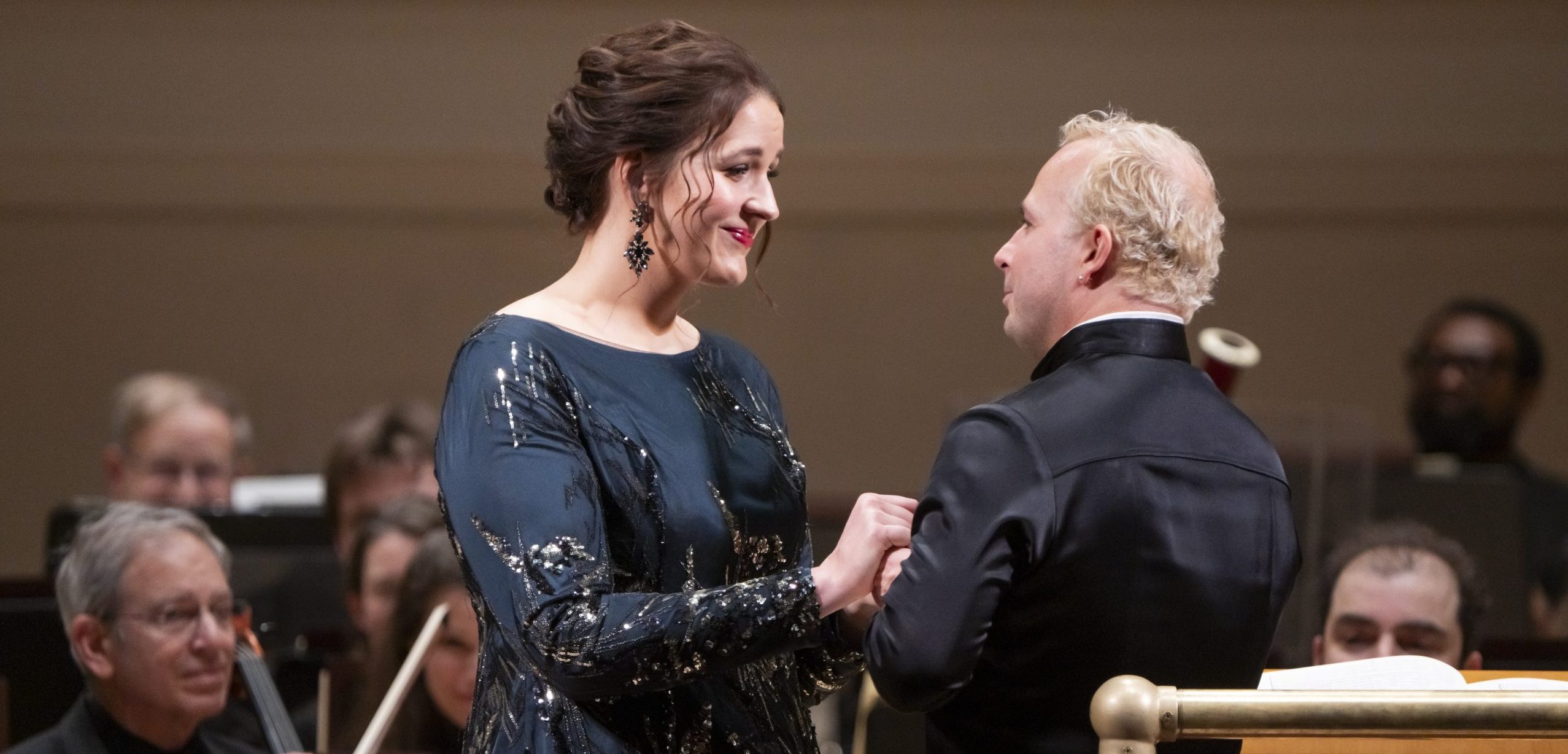Bach: Fuga (Ricercata) a 6 voci from Musical Offering, BWV 1079 (1747; orch. Anton Webern); Wagner: Wesendonck Lieder; Mahler: Symphony No. 5. Metropolitan Opera Orchestra. Cond.: Y. Nézet-Séguin; L. Davidsen, soprano. Performance of Feb. 1, 2024.
How Mahler would have loved the Met Orchestra! It played with such presence, such enormous expressivity, clarity and strength that all the extremes Mahler inserted into his hard-won Fifth Symphony came across brilliantly.
Mahler, like Mozart, frequently wrote marches. But whereas Mozart’s were purely musical, as a means of generating material for musical development, Mahler’s marches might be said to express his preoccupation with death, as it does at the beginning of this and his other symphonies. The trumpet fanfare preceding it was authoritatively played by David Kraus. Conductor Yannick Nézet-Séguin, signaling his approach to the symphony, took both fanfare and march extremely slowly, caressing the music rather than moving with a sense of forward motion. This deliberation, embracing every line, inspired extremely attentive playing by the orchestra. The conviction and virtuosity evinced in the performance was completely convincing, characterized by both love and wit. Contrasts were sharply portrayed: tenderness and depth of string tone, especially in the Adagietto, alternated with savage outbursts from winds and percussion throughout. It was a pleasure to watch the strings scurrying in rapid passages while caressing the slower ones (special kudos to the cellos) and to hear the marvelous solo playing especially by French horn Brad Gemeinhart in the Scherzo. The audience erupted following the heroic close of the symphony.
When Webern “arranged” Bach’s fugue by applying his color-splattering technique, called Klangfarbenmelodie, he broke Bach’s melodies into groups of notes of contrasting timbres. This technique, far from clarifying Bach’s intricate intentions, obscured them. Leopold Stokowski may have inflated Bach to a grandiose level, but his orchestrations enhanced the profile of Bach’s counterpoint. Webern’s “cubistic” rendering, on the other hand, gives the music a kaleidoscope of colors but makes it impossible to distinguish one Bach line from another. A nice trick for Webern; not so good for Bach.
Whereas Mahler, the symphonist, set texts throughout his life, Wagner, the mature opera composer, set only one set of poems, written by his muse Mathilde Wesendonck. It is reflective of the hopeless situation between them and is indicative of his thinking about love and death, soon to surface in the opera Tristan und Isolde. Here is the final verse of the last song, “Träume” (Dreams):
“So that they grow, so that they bloom,
and, dreaming, pour out their fragrance,
Gently fading on your breast,
And sink into their grave.”
The musical setting is recognizable because it appears in Tristan as a love duet in the second act. The despair of Tristan’s fatal wound that opens the opera’s third act is the basis for the third song, “Im Treibhaus” (In the Hothouse).
Lise Davidsen is a stunning exemplar for this intense cycle. She sang with subtle differences in timbre in delicate sections and with power and conviction in more forceful passages. She navigated the extremes of these emotional verses with empathy and a beautiful stream of sound that persuaded with every phrase. Her encore, “Dich Teure Halle,” with its sumptuous orchestral accompaniment and climactic high B, roused the audience to a standing ovation.
